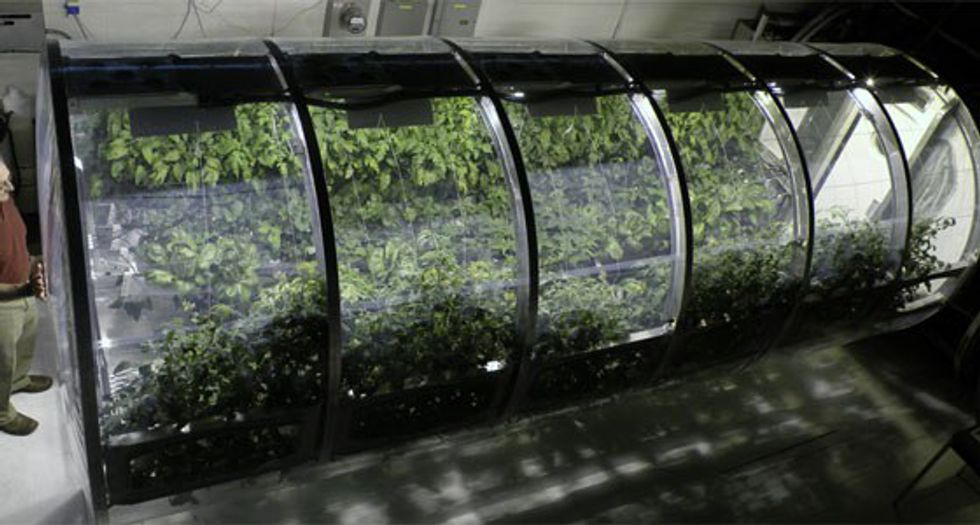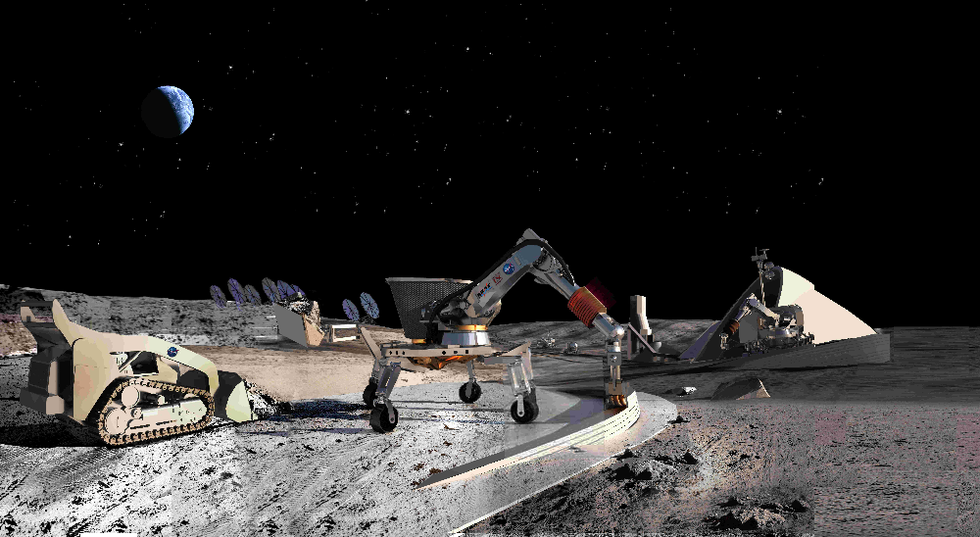For those of you who don't obsessively follow the modern day genius that is Elon Musk and his companies, SpaceX and Tesla, or for those who can't sit through a Musk presentation due to his slightly awkward public speaking, Elon announced his plans to colonize Mars last Tuesday at the International Astronautical Congress.
The presentation is about an hour long, but the actual logistics of the rocket start around the thirty-minute mark. In a nutshell, SpaceX plans to build a very large ship that can get to Mars in 5 steps:
1. The rocket ship launches into space, falling into an orbit around Earth.
2. The booster (bottom part of the rocket) detaches, returns back to Earth and relaunches with cargo filled with fuel.
That little thing sitting on the left of the landing rocket is the fuel cargo.A pully-like arm will come down from the stand in the middle, attach to the fuel cargo, then swing it over to the booster and place it on top before relaunching.
3. The cargo attaches to the orbiting spaceship to refuel.
4. The spaceship detaches, fires up its rockets and heads towards Mars.
Those wing looking things are solar panels that will deploy during the trip. With the games and restaurants promised to be in the cargo hold, the astronauts will be using lots of energy that will need replenishing.
5. Using propellant landing (smaller, steerable rockets on the spaceship), the spaceship lands on Mars and colonization begins.
That gets us to Mars, sure. But how is life actually going to be sustained there? Elon Musk wasn't clear on this aspect of the plan, but I'm not entirely sure he is worried or even plans to worry about that part. Once he starts making his rockets a reality, other companies will take notice and recognize an untouched market: sustainable life on Mars. They'll invest in research for greenhouses, gravity converters, Mars sustainable shelters and even new Martian fashions. Other companies looking to make a profit will do the grunt work for him, creating a partnership between SpaceX to fulfill the vision of multiplanetary life.
Researchers at the University of Arizona have already designed a greenhouse that would be sustainable on Mars without needing to alter its atmosphere.
This is only one chamber with fully-grown plants. You can watch a live webcam of the lab here.
Contour Crafting, a system developed at the University of Southern California, has already developed a way to build on Mars within a day, using melted sulfur found in Martian soil. This technology could build houses, laboratories, reservoirs, you name it.
This may seem like a plan straight out of a science fiction novel (and it is, partially: Musk pays tribute to the novel,"The Hitchhiker's Guide to the Galaxy" throughout his plan), but if any company can complete it, it's SpaceX.




























